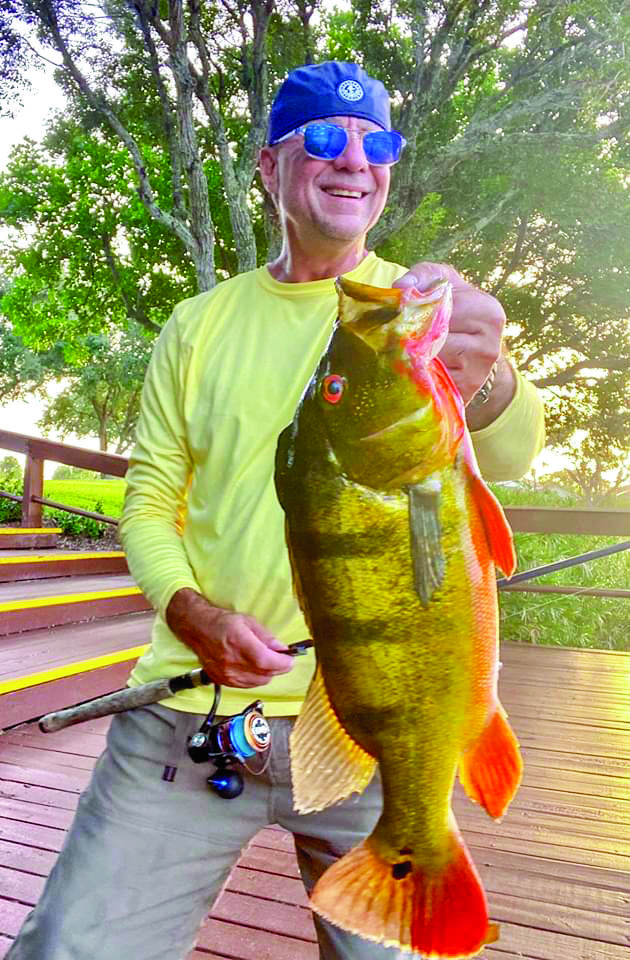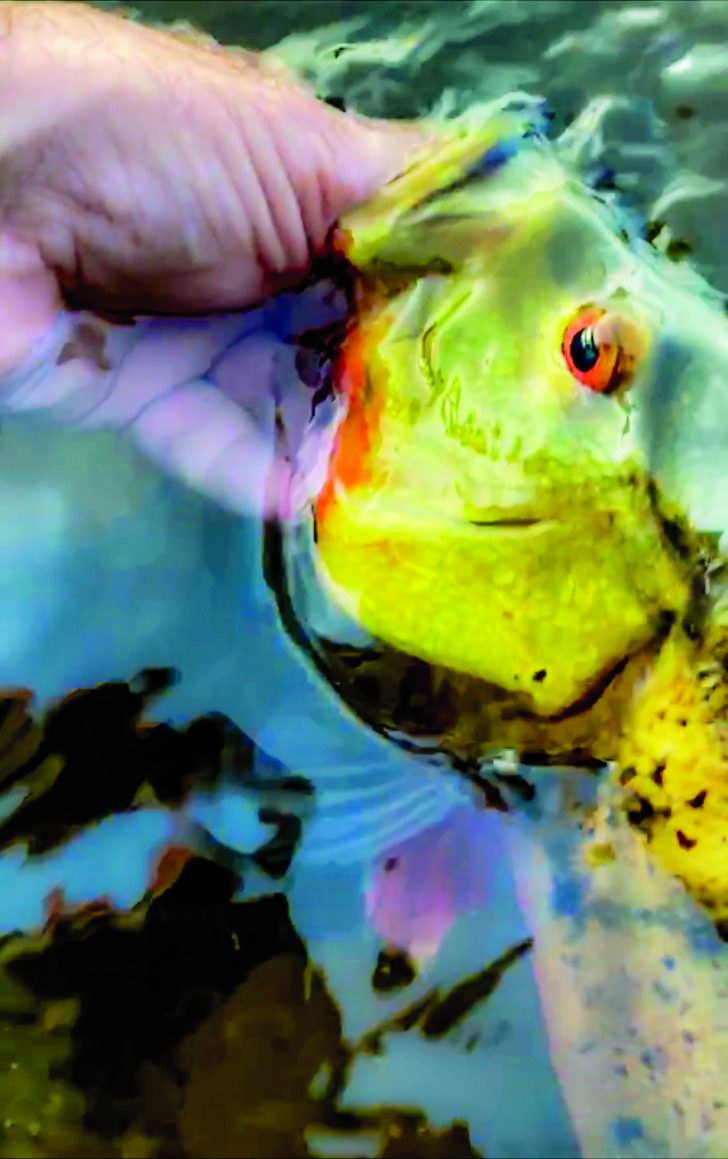
By Mark Ambert, Contributing Writer
I’m recent a transplant having settled in Florida from the northeast. Most of my fishing here has been in the salt and from a center console tapping the amazing fishery found offshore. With my boat in the shop, and in desperate need of a fishing fix I decided to target something different.

Something close to home and in striking range of a brisk bike ride. Why not a trip to the local lakes but for something more exotic than the largemouth bass that frequent them. Why not peacocks? Cichla ocellaris, also known as the butterfly peacock or “peas” by the locals; is a large species of cichlid from South America, and a prized game fish. I’ve never caught one before and wasn’t sure they were in enough numbers here in Jupiter to make the effort worthwhile. They’ve been on my bucket list for years, so I was excited about the prospect. Being a sub tropic species, they would surely like it hot! The late summer heat would not put them off. After speaking with the locals, I decided to give it a shot. A definite new challenge for me and here’s what I found.

Peacocks are definitely in the local lakes and canals where deeper water can provide shelter in case of a cold spell. I was not sure in what numbers but once I got them dialed in, I was able to catch them regularly enough to make the challenge fun. Scouting out common ambush areas along the shoreline was the obvious place to start. I picked a favorite lure that I have confidence in — one that I could cover a lot of water quickly while trying to find the fish. This is a key strategy with peacocks – make systematic casts to cover the area then move on. The 3 ½” Rapala Ripstop in olive green is an incredible lure for scouting. It can be retrieved quickly or slowly and is also very effective mimicking a suspended injured bait. It has a unique paddle tail that imparts a darting motion and triggers an immediate response if fish are present.

Since this species are a tropical transplant, I picked the hottest part of the day to fish. I began by methodically covering the shoreline around points, drop offs, steep banks, or any other available structure. Peacocks are definitely ambush predators and look for a place to take advantage of baits swimming within range. Any docks, bridges, pilings, or culverts should be targeted. They seem to prefer a stop and twitch retrieve — not a long pause but rather a steady twitch in a series of twos or threes while retrieving at a moderate pace. This retrieve seemed to generate the most aggressive strikes. If you’re not having success vary the speed and cadence of the retrieve. I’m sure a fly rod and Clouser Minnow would be a deadly combination for these fish! They are notorious short strikers and with a sharp quick tap — there and gone if you’re not quick with the hook set!
Pro tip— I fine tune my lures with a thin wire hook in the front and a slightly heavier hook on the back of the lure for a sure hookup.
Peacocks seem to target the head of the bait first. The thin wire hook used in the front penetrate easily on a quick strike. The larger peacocks are strong fighters and will straighten the thin wire hooks which is why I use the heavier hook on the rear of the lure for holding power. The larger fish will usually take both sets. Once hooked they will either dig deep or jump! Be prepared to back off the drag a bit and let them fight if they decide to run. These fish have fighting power and stamina similar to a saltwater species and punch way above their size. Unlike a largemouth, when lipped they will not go immobile and still try to get away. I’ve had them shake hard enough to have dropped a trophy-sized fish back in the water! Remember — cover as much ground as possible until you locate feeding fish. Mark the places that you find them for future success. Try targeting different times of the day and look for a pattern. Persistence will pay off! They are such a prehistoric looking fish and quite a trophy to catch. Every single one puts a smile on – that’s what fishing is all about. It will be well worth the effort to target these colorful and acrobatic fighters!
Mark Ambert – Avid outdoorsman, sportswriter, and photographer.“For me, fishing is a passion second to none. It sets the heart racing and soul on fire to be on the water and in the hunt. For those few hours we can forget everything, and life unfolds like no place else. Always live your passion.”
Follow me on Instagram @marksgonefishing or contact me at marksgonfishing25@gmail.com for collaboration.
